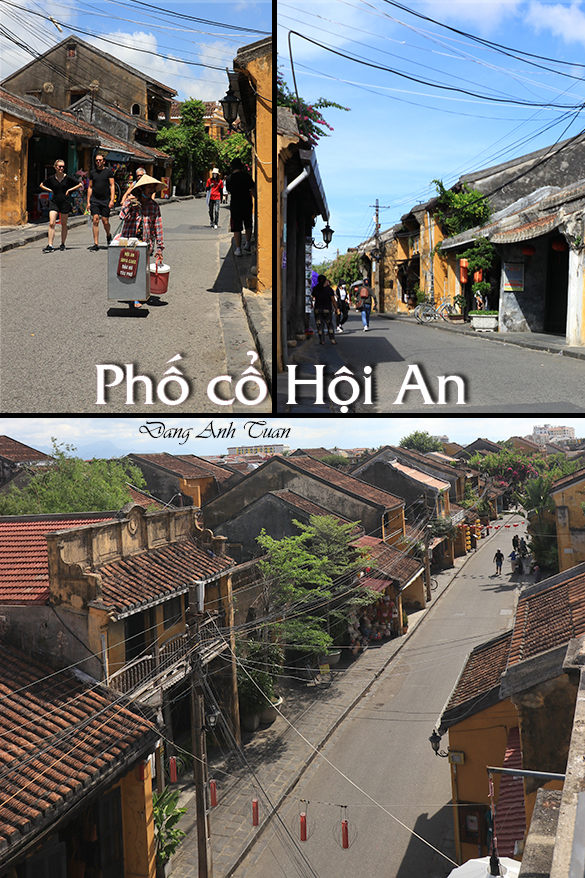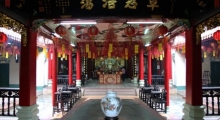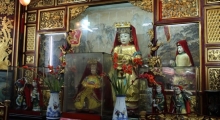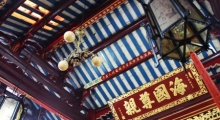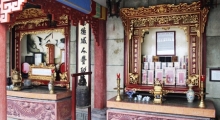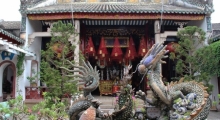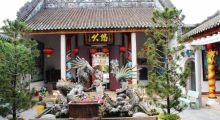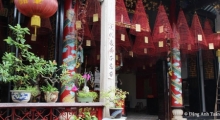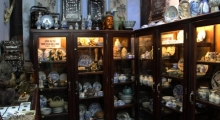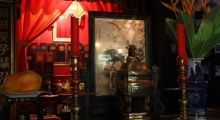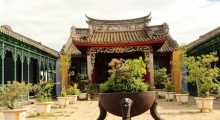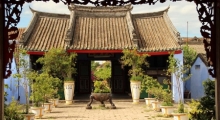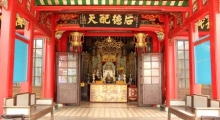Chính ở đây chúng ta tìm thấy có rất nhiều các công trình kiến trúc nổi tiếng của thành phố Hội An. Được gọi là Minh An, khu này có m ột diện tích khoảng hai cây số vuông. Tương tự như các ô vuông được tìm thấy trên bàn cờ, các đường phố của nó rất ngắn và hẹp. Trong b ản đồ này có 3 con đường ngang đó là đường Trần Phú, Nguyễn Thái Học và Bạch Đằng. Trong đó quan trọng nhất vẫn là đường Trần Phú kéo dài qua cầu Nhật Bản bằng đường Nguyễn Thị Minh Khai. Còn các phố dọc gồm có 5 phố: Nguyễn Huệ, Lê Lợi, Hoàng văn Thụ, Trần Quý Cáp và Hai Bà Trưng. Không có ngôi nhà nào có nhiều hơn một tầng. Việc xây dựng các nhà nầy được thực hiện bằng vật liệu truyền thống: gỗ và gạch.
Plan du quartier Minh An à Hôi An
Rue Trần Phú
- 7 Musée de l’histoire et de la culture
- 10 Siège de la congrégation du Hainan
- 14 Temple Minh Hương
- 24 Temple Guan Yu
- 46 Siège de la congrégation du Fujian
- 64 Siège des congrégations chinoises
- 77 Vieille maison Quân Thắng
- 80 Musée de la porcelaine et de la céramique
- 129 Vieille maison Đức An
- 149 Musée de la culture Sa Huỳnh
- 157 Siège de la congrégation du Chaozhou
- 176 Siège de la congrégation du Guangdong
- Pont pagode (Chùa cầu)
Rue Nguyễn Thái Học
- 33 Musée de folklore populaire (Bảo tàng văn hóa dân gian)
- 101 Vieille maison Tấn Ký (Nhà cổ Tấn Ký)
- Temple Hy Hòa (Miếu Hy Hòa)
Nguyễn Thị Minh Khai
Rue Lê Lợi
C’est ici qu’on trouve un grand nombre d’ouvrages architecturaux de renom de la ville Hội An. Etant connu sous le nom de Minh An, ce quartier possède une superficie d’environ deux kilomètres carrés. Analogues à des carrés qu’on trouve sur un échiquier, ses rues sont courtes et étroites. Dans ce plan, il y a trois axes de rues horizontales: Trần Phú, Nguyễn Thái Học et Bạch Đằng. La plus importante d’entre elles reste la rue Trần Phú prolongée au delà du pont japonais par la rue Nguyễn Thị Minh Khai. Quant aux rues verticales, on relève cinq: Nguyễn Huệ, Lê Lợi, Hoàng văn Thụ, Trần Quý Cáp et Hai Bà Trưng. Aucune maison n’a plus qu’un étage. Sa construction a été effectuée avec des matériaux traditionnels: bois et briques.
Hội An’s neighbourhood plan
Here is where one finds a large number of renown architectural works of Hội An. Being known under the Minh An name, this neighborhood possesses an area of approximatively 2 square kilometers. Similar to squares found on a chess board, its streets are short and narrow. In this map, there are three axis of horizontal streets: Trần Phú, Nguyễn Thái Học and Bạch Đằng. The most important of these remains the Trần Phú street which is extended beyond the Japanese bridge by Nguyễn Thị Minh Khai street . As for vertical streets, there are five: Nguyễn Huệ, Lê Lợi, Hoàng văn Thụ, Hai Bà Trưng. No home has more than one floor. Its construction has been realized with traditional materials: wood and brick.
Références bibliographiques (Bibliography)
- Patrimoine mondial du Vietnam. Editions Thế Giới.
- World Heritage Hội An. Showa Women’s Univeristy Institute of International Culture (Japan).
- Hội An. Nguyễn văn Xuân. Maison d’édition Danang 2000
Quelques photos de ces maisons historiques


